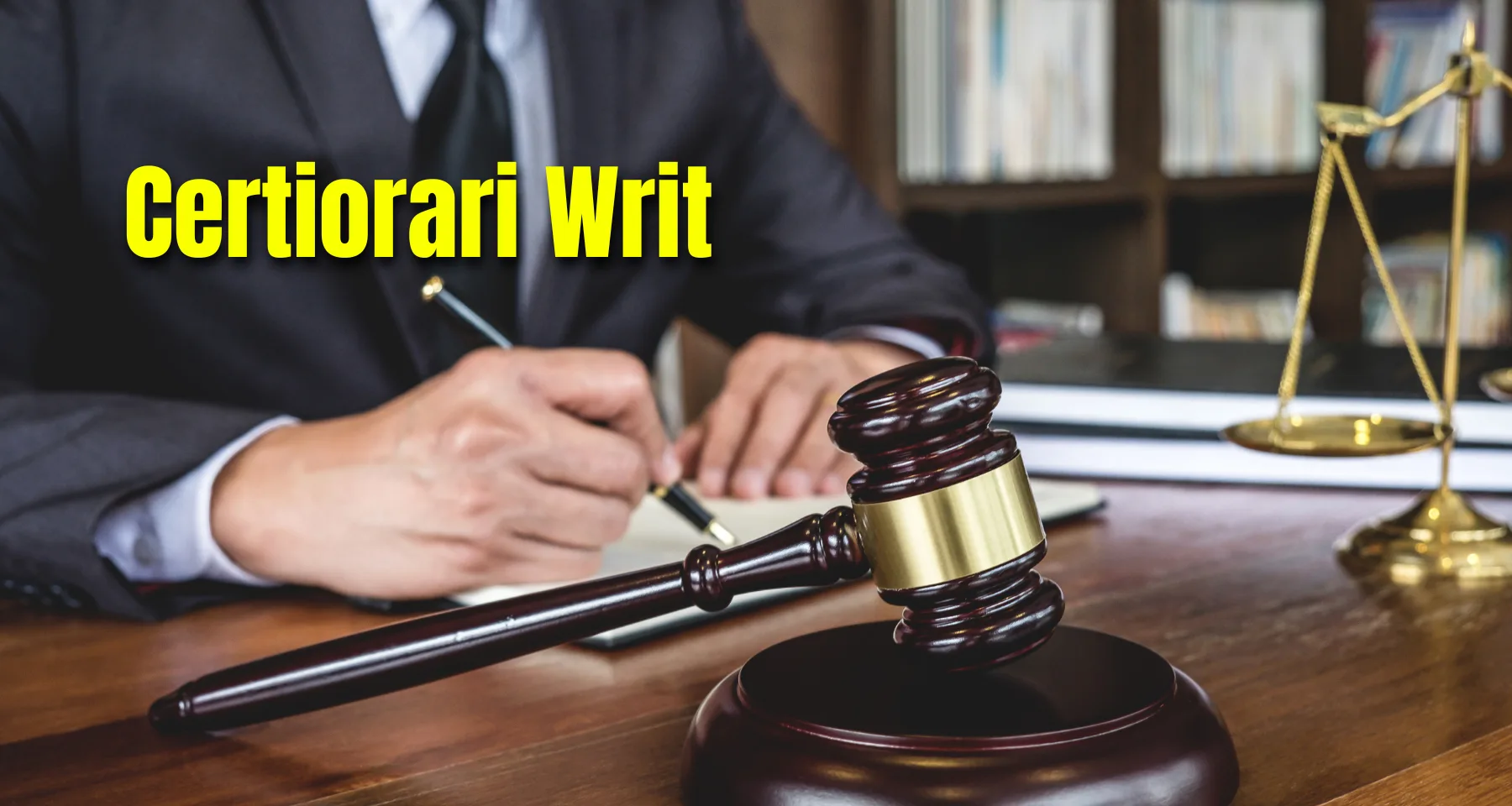Explanation of Certiorari Writ: Unraveling its Purpose and Mechanics

Explain Certiorari Writ in Detail
Certiorari is a legal remedy and writ that holds significant importance in administrative law, providing a means for superior courts to review and quash the decisions, orders, or judgments of lower courts, tribunals, or quasi-judicial authorities. The term “certiorari” is derived from Latin, meaning “to be certified” or “to be informed.” The writ of certiorari is sought when there is a belief that the lower authority has acted beyond its jurisdiction, committed errors of law, or violated the principles of natural justice.
Key aspects of the certiorari writ include:
1. Purpose and Scope: Certiorari is a corrective remedy designed to rectify legal errors. It is not concerned with the merits of the case but focuses on ensuring that the lower authority has acted within the confines of its legal authority. The writ petition is issued to quash the proceedings or decisions that are found to be ultra vires (beyond the powers) of the lower authority.
2. Grounds for Issuance: Certiorari can be sought on various grounds, including lack of jurisdiction, errors of law, violation of the principles of natural justice, or acting in excess of statutory powers. It allows a superior court to intervene and correct legal irregularities in the proceedings of lower authorities.
3. Principles of Natural Justice: The writ of certiorari is particularly relevant in cases where there is a violation of the principles of natural justice, such as the right to a fair hearing or the right to be heard. If the lower authority fails to adhere to these principles, certiorari may be invoked to quash the proceedings.
4. Review of Administrative Decisions: Certiorari provides a mechanism for the review of administrative decisions, ensuring that they are made in accordance with the law. It acts as a safeguard against arbitrary or capricious administrative actions that may adversely affect individuals.
5. Procedure: The process of seeking certiorari involves filing a petition before the relevant superior court, outlining the legal errors or irregularities committed by the lower authority. The court, upon being satisfied that grounds for certiorari exist, may issue the writ, quashing the impugned decision or order.
6. Discretionary Nature: Like other prerogative writs, certiorari is discretionary. The court has the authority to decide whether the circumstances of the case warrant the issuance of the writ. It may decline to grant certiorari if there are alternative remedies available or if the petitioner has delayed in seeking the remedy.
7. Effect of Issuance: If a certiorari is issued, it nullifies the decision or order of the lower authority. The proceedings are treated as if they never occurred, and the matter may be remitted back to the lower authority for reconsideration in accordance with the law.
The certiorari writ serves a crucial purpose in the legal landscape, providing a mechanism to correct errors of jurisdiction or fundamental legal principles by lower courts or administrative bodies. It ensures that justice is upheld through the review of decisions that may adversely affect individuals or entities. The mechanics of certiorari involve a meticulous scrutiny of the lower court’s proceedings or administrative actions, ensuring adherence to procedural fairness and substantive justice. For NRIs navigating legal complexities in India, seeking NRI legal advisory on matters involving certiorari writs is essential to ensure their rights are protected and upheld effectively. Understanding the purpose and mechanics of certiorari writs empowers individuals to seek judicial review when necessary, thereby reinforcing the rule of law and safeguarding against arbitrary exercises of power.

